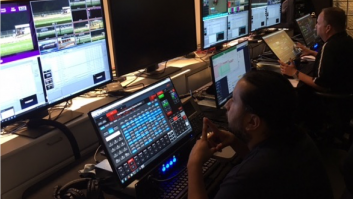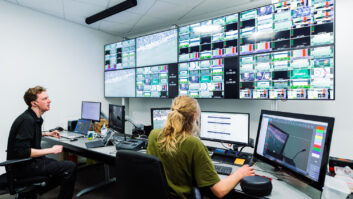Earlier this year, Tata Communications announced the development of a 100G media backbone to help broadcasters and sports organisations offer worldwide content via remote production. Since UHD 4K video requires four times more bandwidth (12Gbps) than HD, the new backbone is designed to support even the most intensive, immersive viewing experiences.
“At a backbone level, what we saw is there is a specific and a very firm trend going towards more remote production, more individual and unilateral feeds, for a lot of sports globally,” says Dhaval Ponda, global head of media entertainment services, Tata Communications. “For example, going forward a lot of these global sports will have a unique feed for South America, for North America, for China, South Korea, India, parts of the Middle East and Africa as well. All of this requires more broadcast-ready infrastructure, to support this expansion.
“This move to actually upgrade our backbone to 100G is a firm investment from Tata Communications towards enabling more customised feeds, more remote production to take place, and at the same time, not sacrificing anything either on the latency side of things or even making sure that level of redundancy is available for broadcasters to do this with ease and a little bit of comfort in their mind that this will be supported on a global infrastructure at this scale.”
Tata Communications’ engineering teams are currently in the process of deploying this backbone and working towards a convoyed solution. “When I say a convoyed solution, that’s how to reliably support data, broadcast video, generic video which is used for either gamification or other such applications, as well as unified collaboration on one single network,” Ponda explains. “The 100G deployment will largely support probably the world’s largest live video infrastructure at this scale. This solution has been tested in the most extreme situations, and it will roll out to an increasing number of locations and broadcasters over the course of this year.”
So why specifically 100G? Ponda says the capacity has much to do with the specifications of engineering level devices. “A lot of cards and devices go from one gig to 10G to multiples of 10G,” he says. “Yes, we could have gone for an interim step of upgrading it to 50G, but we see enough demand in the marketplace, both current and in the coming years, to take a firm step and invest for a full 100G upgrade at this stage, because it gives enormous opportunities for a lot of our sports broadcasters as well as federations, to plan for radical changes to their programming format.”
Ponda uses the example of simultaneously delivering multiple sporting events, transporting tens of 4K feeds back to a remote production hub for global distribution. “On any given weekend, we are doing a lot of American soccer (MLS, USL, National Women’s Soccer League), a lot of European motorsports, and at the same time a lot of sports in Asia as well,” he explains. “In a situation like this, where a lot of American soccer is being watched by, let’s say, 70 to 80 million in the US, at the same time European motorsport is being consumed all over the world. And you also have Chinese soccer or an Indian cricket match. These simultaneous events are happening probably within the same 24-hour period. Even in these scenarios, we are now saying that if all of you would want to go in for multiple 4K feeds or you want to deploy a simultaneous sport production solution, capacity and infrastructure is no longer a problem or even a point of discussion anymore.”
Meanwhile, the rise of social media has only made the issue of latency more important, given the risks of being alerted to incidents before seeing them on screen. “Latency has been a very significant factor in the way we’ve deployed this solution globally,” notes Ponda. “We have worked extensively with a lot of our technology partners in the broadcast industry to come with a solution that runs on our own network, because that is the element of advantage here, that we don’t have to go to five different partners and convince them to deploy our technology. All of this network is owned and managed by Tata Communications and our teams globally, so it becomes simpler to deploy a latency-sensitive solution on this global network.”
What about the use of the 100G media backbone outside of sports? “This is something that we actively think about a lot,” remarks Ponda. “Sport broadcasters realised that by centralising their production facilities, they could have significantly better access to tools and services to produce a better quality broadcast product, which meant that the quality of the product actually went up dramatically. And they could add social media feeds, additional graphics, additional options, gamification options, integration with some of the tools on social media which gives viewers a lot of power.
“This has also opened the conversation into, ‘wait a second, if I can do this for sporting content and for news, why can’t I use the same crew for TV drama?’,” he continues. “So yes, the answer is very firmly this is not just impacting sports and news, the same infrastructure investment that the media organisations have done for remote production will definitely be leveraged for almost every other format and type of content out there.”







